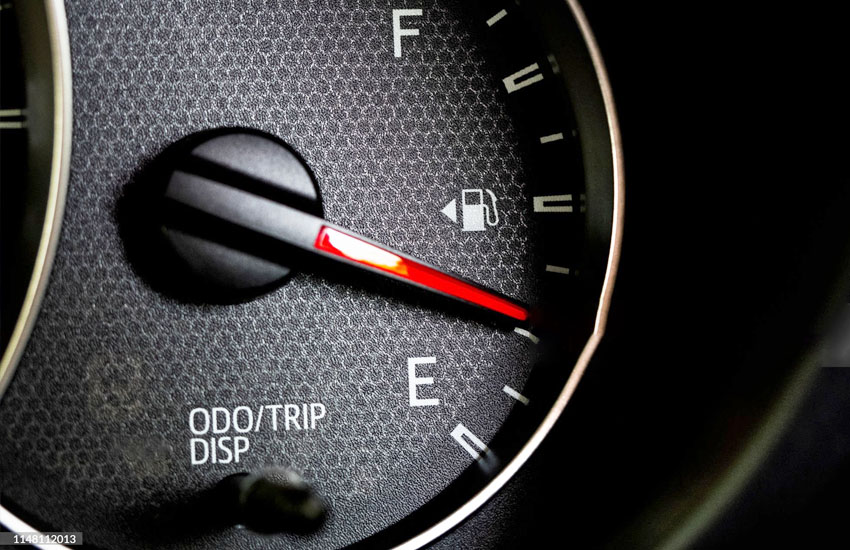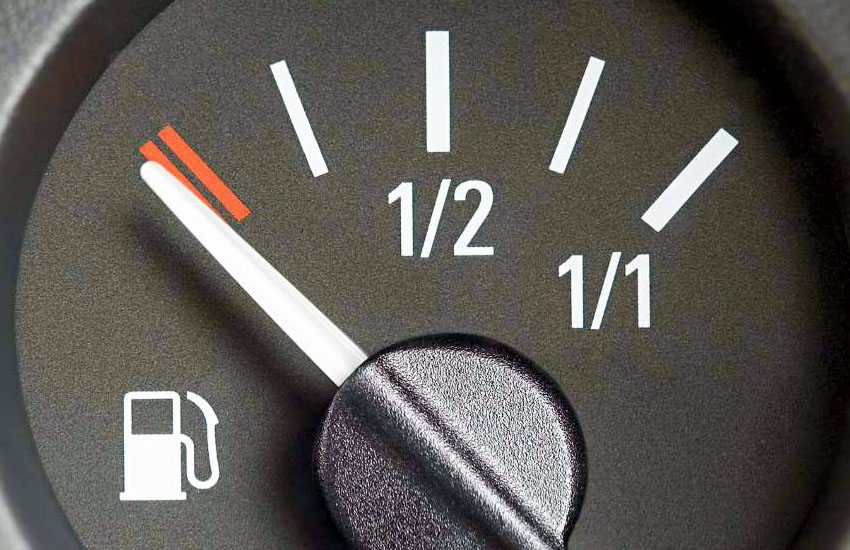Have you ever noticed your gas gauge needle behaving strangely? It might be stuck, inaccurate, or showing full when your tank is empty. Not to worry! You’re not alone in this dilemma. Resetting or fixing a gas gauge needle is a common issue faced by car owners. Whether it’s a simple electrical issue, a malfunctioning sensor, or something more complex, there are several ways to address it. In this ultimate guide, we’ll break down everything you need to know to get your gas gauge needle back to normal. Let’s jump into it!

Understanding How Gas Gauges Work and Why They Get Stuck
Before we dive into how to reset or fix your gas gauge needle, it’s essential to understand how gas gauges work in the first place. The gas gauge system is part of your car’s electrical system and involves a few key components: the sending unit, the fuel tank, and the needle or gauge on your dashboard.
The Sending Unit and Float
At the heart of the gas gauge system is the sending unit, which is located inside the fuel tank. The sending unit has a float that moves up and down with the fuel level. When the fuel level drops, the float moves lower, and when the tank is full, the float rises. This movement is translated into an electrical signal that is sent to the gas gauge, telling it how much fuel is in the tank.
The Gauge Itself
The gas gauge on your dashboard receives the electrical signal and converts it into a readable value. It then displays this value on the needle, showing you how much fuel is left in your car. In most modern vehicles, the gas gauge needle should move smoothly in response to changes in fuel levels. However, if the sending unit, wiring, or gauge itself fails, the needle may get stuck, show incorrect readings, or stop moving altogether.
Why Gas Gauges Get Stuck
The gas gauge needle can become stuck for several reasons, including a malfunctioning sending unit, a broken float, a damaged wiring connection, or an electrical issue. Sometimes, the problem can be as simple as a fuse issue, while in other cases, the entire sending unit may need to be replaced. Understanding the root cause of the problem is the first step toward fixing it.
Step-by-Step Guide: How to Reset the Gas Gauge Needle
Now that you have a basic understanding of how the gas gauge works, let’s dive into the steps you can take to reset or fix your gas gauge needle. While some of these fixes are DIY-friendly, others may require professional help, depending on the severity of the issue.
Step 1: Disconnect the Battery
In some cases, the gas gauge needle may be stuck due to an electrical glitch or issue with the car’s computer. One of the easiest things to try is disconnecting the battery for a few minutes. This process can reset the car’s electrical system, including the fuel gauge. Disconnecting the battery is a safe, non-invasive method, and it could clear any minor glitches in the system.
To disconnect the battery, follow these steps:
- Turn off your car and open the hood.
- Use a wrench to remove the negative (black) terminal of the battery.
- Wait for about 5–10 minutes, then reconnect the terminal.
- Start the car and check if the gas gauge needle resets.
Step 2: Check for a Blown Fuse
If the gas gauge needle is not working at all, a blown fuse could be the culprit. The fuse for the fuel gauge is usually located in the fuse box, which can be found under the dashboard or in the engine bay. To check for a blown fuse, follow these steps:
- Turn off your car and locate the fuse box.
- Look for the fuse that controls the fuel gauge (it may be labeled as “fuel,” “gauges,” or “instrument cluster”).
- Remove the fuse and inspect it. If the metal strip inside the fuse is broken, the fuse is blown.
- Replace the blown fuse with one of the same amperage.
- Start the car and check the gas gauge needle.
Step 3: Inspect the Sending Unit
A common issue with malfunctioning gas gauges is a faulty sending unit. If the sending unit is not providing the correct signal to the gauge, the needle may become stuck or show incorrect readings. To check the sending unit, you’ll need to access the fuel tank. Here’s how to inspect the sending unit:
- Ensure the car is turned off and the fuel tank is empty or low to minimize the risk of spills.
- Depending on your vehicle, you may need to remove the back seat or access the tank from the trunk to reach the sending unit.
- Inspect the sending unit for any visible damage or wear, including the float mechanism.
- If the sending unit is damaged, it will need to be replaced.
Step 4: Check the Wiring Connections
If the sending unit seems to be functioning correctly but the gas gauge needle is still not working, the issue might lie with the wiring connections. Over time, wires can become corroded or loose, causing a break in the electrical signal between the sending unit and the gauge. Inspect the wiring for any signs of damage, such as frayed wires or corrosion.
If you find any damaged wiring, you’ll need to repair or replace the affected sections. This can be a bit tricky, as the wiring may be tucked away in hard-to-reach areas, so it’s often best to consult a professional mechanic if you’re unsure.
Step 5: Replacing the Fuel Gauge
In some cases, the gas gauge needle might be malfunctioning due to an issue with the gauge itself. If the sending unit and wiring seem fine, but the needle still isn’t moving properly, the gauge may need to be replaced. Replacing the fuel gauge requires removing the instrument cluster from the dashboard, which can be a bit tricky. Here’s how you can do it:
- Remove the screws or clips holding the instrument cluster in place.
- Gently pull the cluster out from the dashboard, taking care not to damage any wires or connectors.
- Disconnect the wiring harnesses from the back of the cluster.
- Remove the old fuel gauge and replace it with a new one.
- Reassemble the instrument cluster and reinstall it in the dashboard.
- Start the car and check the new gas gauge needle.
Common Issues That Affect the Gas Gauge Needle
Now that you know the steps to reset or fix your gas gauge needle, it’s important to understand some common issues that can affect the needle’s performance. Some of these issues can be fixed easily, while others may require professional intervention.
Faulty Sending Unit
The sending unit is one of the most common causes of a malfunctioning gas gauge. If the sending unit is faulty, it may not send the correct signal to the gauge, causing the needle to get stuck or show inaccurate readings. Replacing the sending unit is often the solution.
Broken Float
The float inside the sending unit is responsible for detecting the fuel level. If the float becomes damaged or gets stuck, the gas gauge needle may not move properly. In some cases, the float may need to be replaced to restore proper function.
Wiring Issues
Wiring issues, such as frayed or corroded wires, can cause interruptions in the electrical signal between the sending unit and the gauge. Inspecting and repairing the wiring is essential for restoring proper function.
Instrument Cluster Problems
Sometimes, the problem lies with the instrument cluster itself. If the fuel gauge needle is still not working after checking the sending unit and wiring, the instrument cluster may need to be replaced.
Electrical Glitches
Electrical glitches or software issues in the car’s computer system can also cause the gas gauge needle to malfunction. In these cases, disconnecting the battery or resetting the car’s ECU may solve the problem.
Preventing Gas Gauge Issues: Regular Maintenance Tips
To avoid gas gauge problems in the future, it’s important to stay on top of your car’s maintenance. Here are some tips to help you prevent issues with your fuel gauge:
Regularly Inspect the Fuel System
Check the condition of your car’s fuel system, including the sending unit and wiring, on a regular basis. Look for signs of wear, corrosion, or damage that could affect the performance of your gas gauge.
Address Problems Early
If you notice that your gas gauge is acting strangely, don’t wait too long to address the issue. The sooner you identify and fix the problem, the less likely it is to cause further damage to your car’s electrical system.
Keep the Fuel Tank Full
Keeping your fuel tank at least a quarter full can help reduce the wear and tear on the sending unit and float. A low fuel level can cause the float to become stuck, leading to inaccurate readings on the gauge.
Have Your Car Serviced Regularly
Regular service appointments with a qualified mechanic can help catch any issues with your gas gauge system early on. A professional inspection can identify potential problems before they become more serious.
I hope this guide has helped you understand how to reset or fix your gas gauge needle. Whether you’re dealing with a faulty sending unit, damaged wiring, or an electrical glitch, there are several ways to troubleshoot and resolve the issue. By staying on top of regular maintenance and addressing problems early, you can keep your gas gauge functioning properly for years to come.

Frequently Asked Questions
Is it possible to reset the gas gauge needle by disconnecting the battery?
Yes, disconnecting the battery for a few minutes can sometimes reset the gas gauge needle by clearing any electrical glitches or software issues in the car’s computer system.
Can a blown fuse cause the gas gauge needle to stop working?
Yes, a blown fuse can interrupt the power supply to the fuel gauge, causing the needle to stop working. Replacing the fuse may resolve the issue.
Do I need to replace the sending unit if my gas gauge needle is stuck?
If the sending unit is malfunctioning, it may need to be replaced. However, other issues like damaged wiring could also be the cause, so it’s important to inspect all components.
Is it safe to replace the fuel gauge myself?
Replacing the fuel gauge can be a complex task that requires removing the instrument cluster. If you’re not comfortable with this, it’s best to consult a professional mechanic.
Can electrical glitches affect the gas gauge needle?
Yes, electrical glitches or software issues in the car’s ECU can cause the gas gauge needle to malfunction. Resetting the system may resolve the issue.
Is it necessary to replace the float in the sending unit?
If the float is damaged or stuck, it may need to be replaced to restore proper function to the gas gauge needle.
Do I need to replace the instrument cluster if the gas gauge is malfunctioning?
If the sending unit and wiring are in good condition, the problem could lie with the instrument cluster itself. Replacing the cluster may be necessary if it’s damaged.
Can low fuel levels cause problems with the gas gauge needle?
Yes, keeping your fuel tank very low can put stress on the sending unit and float, leading to inaccuracies in the gas gauge reading.